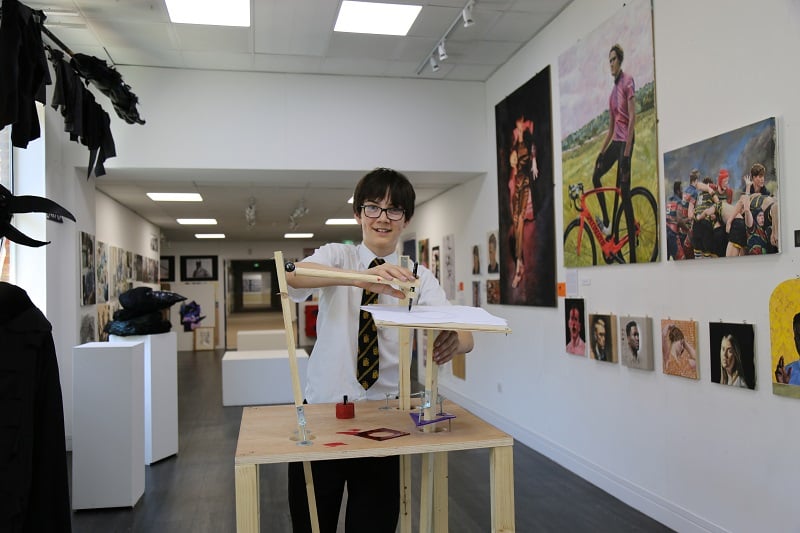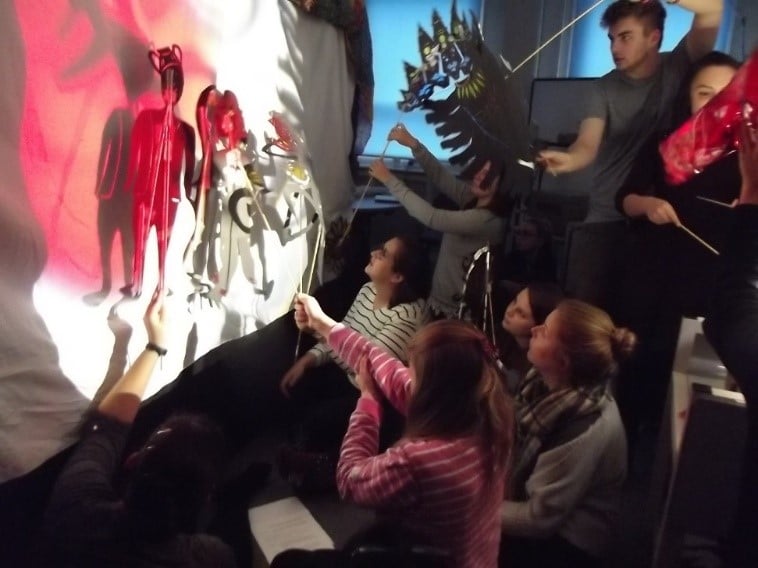
Supporting students to work independently
BY: Guest Writer
04 Jan 2016
Ormiston Sudbury Academy is a rural school with very little access to the arts in the local area. Exposing students to good quality, professional arts is extremely important to us and is one of the reasons that we decided to run Arts Award at Bronze, Silver and Gold levels.
We currently run Gold Arts Award as an option within the Key Stage 5 curriculum and Bronze and Silver Arts Awards as extension activities for gifted and talented arts students in key stages 3 and 4. We have recently decided to use Arts Award to achieve our aim of exposing all students in the academy to good quality professional arts experiences. To do this, we offer Bronze Arts Award to the entire Year 9 cohort alongside the more formal curriculum subjects of Drama, Dance, Music, Technology, Art and Textiles.
Bronze Arts Award student help booklet
When we started delivering Bronze Arts Award to the whole Year 9 cohort (well over a hundred students), we quickly realised that it was going to be difficult to ensure that every single young person was completing all of the evidence required to achieve a successful moderation. Working on such a large scale, we felt we needed a resource that specifically related to the activities our students would be taking part in. Students needed prompt questions and guidance that they could refer to at home when completing their portfolio and setting themselves challenges. This would enable them to work a lot more independently. So to help Year 9 students develop their independent learning skills while completing their Arts Award, we created the Bronze Arts Award student help booklet to guide them through each part and to provide them with all the information needed to complete their portfolio of evidence.
Not only does a resource like this benefit centres who are delivering Arts Award to a large number of students, but it also helps to develop students’ ability to take ownership of their Arts Award and develop the key life skills required to work in this way.
How it works
.jpg?width=358&name=ormiston%20(2).jpg) The booklet uses specific questioning. For example - the page pictured on the left is from the guidelines for Part A: explore the arts as a participant. If students follow these guidelines, complete all of the activities listed and then answer all of the evaluative questions then they will have completed and recorded the process of taking part in arts activities and reflecting on their progress. This booklet enables students to complete their work alone, aside from checking their action plan with their adviser to make sure it is appropriate.
The booklet uses specific questioning. For example - the page pictured on the left is from the guidelines for Part A: explore the arts as a participant. If students follow these guidelines, complete all of the activities listed and then answer all of the evaluative questions then they will have completed and recorded the process of taking part in arts activities and reflecting on their progress. This booklet enables students to complete their work alone, aside from checking their action plan with their adviser to make sure it is appropriate.
.jpg?width=371&name=ormiston%203%20(2).jpg)
Similarly with the section, pictured right, for Part D: arts skills share, young people are able to guide themselves through planning which skill they want to share, and how they are going to do it. Detailed questions then help with the evaluation process.
.jpg?width=325&name=ormiston%204%20(2).jpg)
Part B: explore the arts as an audience member, has proved particularly useful for improving our students’ theatre reviews. The high quality of the reviews they produce has enabled us to promote Arts Award to other students in the school more successfully. Students are now eager to read each other’s reviews and share their reviews with others. The specific guidelines in the resource have also helped us to justify the award to parents and other teachers, as learning to write an effective review with a clear structure is a life skill. It also helps students with their literacy skills.
For this section, we created a page which detailed how to write a theatre review and gave starter sentences and structure ideas, pictured left. We post pdf versions of our booklet in our Arts Award Facebook group and also email it to the young people completing the award. This makes the resource easily available to everyone and saves a lot of printing costs.
Our aim was to develop a resource that;
• is useful for students of all ability levels
• gave the award a clear structure without taking away the students’ creativity
• allowed students to work independently so that we could facilitate hundreds of students completing the award
This was a challenging remit which students helped us to achieve by contributing to the creation of the booklet. We asked a group of our gifted and talented students who had completed the award the previous year (without our booklet) to mind map all of the areas that they had found difficult and needed support with. We created a first draft, which they tore apart, before approving our second attempt. This has resulted in a resource that is proving to be very successful through achieving all of its aims.
Top tips
- Always consult the students who have already completed the award and those who are about to so that you can find out what they would find useful
- Allow students to proofread your draft resource and give feedback. They will often spot errors or areas which are unclear to students but seem perfectly clear to a teacher
- Keep up to date with all changes to the toolkit as they happen – you don’t want an out of date resource as this will just confuse the young people
- Most importantly keep it simple! The resource is meant to help and make things clearer for the young person, not create confusion
Related posts
BY: Guest Writer
BY: Guest Writer
BY: Guest Writer




Comments & Replies